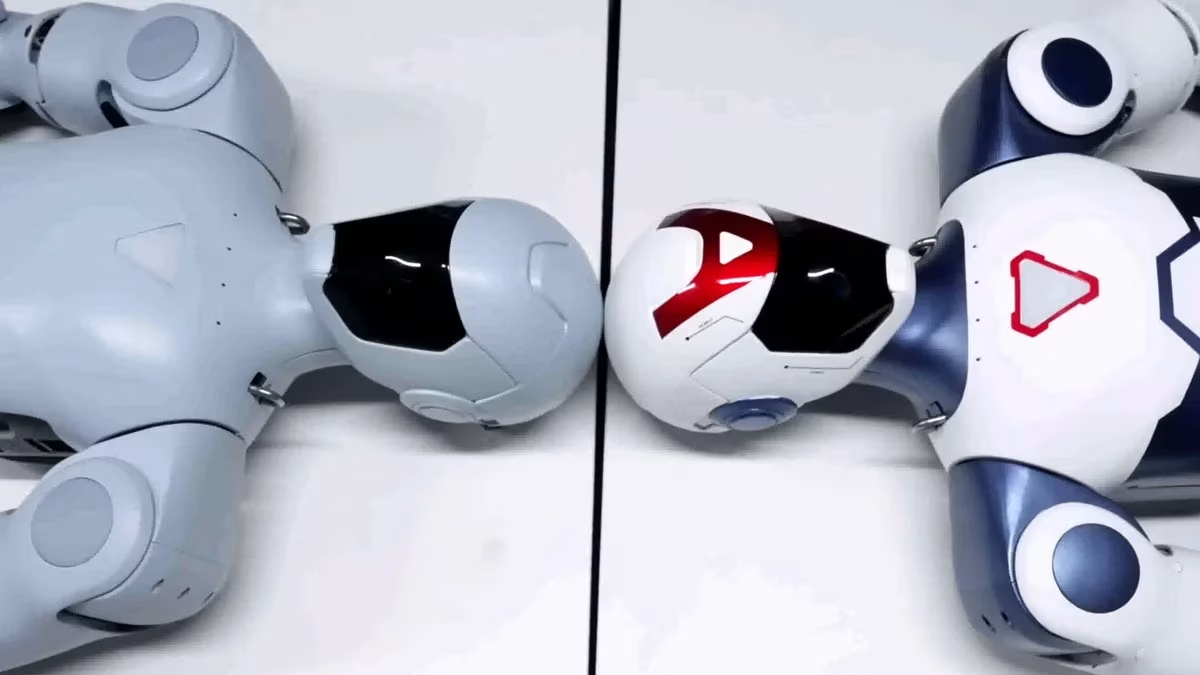Unitree R1: The $5,900 Humanoid Robot That Just Shook the Industry
Well, folks, if you've been following the robotics space, you know it's been a wild ride lately. We've seen incredible advancements, but often, the price tags on these cutting-edge humanoid robots have been, shall we say, astronomical. That's why the recent news from Unitree Robotics is such a massive deal. They've just dropped their R1 humanoid robot, and it's being advertised at a price point that frankly, I didn't think we'd see for a full-sized humanoid anytime soon: a mere $5,900.
Unpacking the R1's Technical Prowess
So, what exactly do you get for that surprisingly low price? The Unitree R1 isn't just cheap; it's designed with some impressive capabilities that make its cost even more remarkable. It's an ultra-lightweight robot, tipping the scales at approximately 25 kilograms (about 55 pounds), and stands around 4 feet tall. This light build is crucial for agility and potentially, for safer interaction in diverse environments.
The R1 boasts 26 joints, which is a significant number, allowing for a surprising range of motion. We're talking about movements that include things like cartwheels and even downhill runs. Think about the complexity involved in programming and engineering that kind of dynamic stability. It's equipped with a multimodal AI system, powered by an 8-core CPU and GPU, which is the brain behind its operations. For sensory input, it has a 4-microphone array for voice recognition and robust image recognition capabilities. Battery life is reported to be around an hour, which, while not extensive for continuous operation, is reasonable for many task-oriented applications, especially considering the price point.
Designed for Developers, Built for the Future
One of the most intriguing aspects of the R1, beyond its price and specs, is Unitree's clear intention for its use. They're positioning the R1 as a fully customizable platform, actively encouraging developers to jump in and contribute to its evolution. This open-ended approach is a smart move, aiming to accelerate what Unitree calls the "agent era." By putting these robots into the hands of more innovators, they're essentially crowdsourcing the future of humanoid robotics.
Of course, it's important to note that some of the sample functions are still in development and testing phases. This isn't a fully baked, ready-for-mass-deployment product in every conceivable scenario just yet. But that's precisely the point: it's a foundation, a canvas for innovation.
Market Disruption and Accessibility: A New Era?
The immediate ripple effect of the R1's launch is undeniable. Experts are already pointing to its potential to significantly disrupt the robotics market. When a capable humanoid robot becomes this affordable, it naturally puts pressure on other manufacturers to re-evaluate their pricing strategies. We could be looking at a broader trend of price reductions across the entire industry, which would be fantastic for adoption.
This affordability isn't just about big corporations anymore. It makes advanced robotics far more accessible to a wider range of businesses, smaller enterprises, and even educational institutions. Imagine the possibilities for research, development, and even niche service applications that were previously out of reach due to cost. Social media platforms, particularly X (formerly Twitter), have been buzzing with discussions. There's a palpable mix of excitement about the technological leap and apprehension about the societal implications, particularly concerning the impact on human labor.
The Broader Trend Towards Affordability
The R1 isn't an isolated incident; it's a dramatic acceleration of a trend we've been seeing. The cost of advanced robotics has been steadily declining, driven by manufacturing efficiencies, component cost reductions, and increased competition. Unitree's R1, however, sets a new, incredibly low price floor for full-size humanoids. This isn't just about making robots cheaper; it's about making them ubiquitous.
The integration of advanced multimodal AI, as seen in the R1, is also perfectly aligned with current trends. AI is no longer just an add-on; it's fundamental to how these robots perceive, understand, and interact with their environment and users. The R1's capabilities in this area, combined with its price, make it a compelling package.
Looking Ahead: What Does This Mean for Us?
The launch of Unitree's R1 at $5,900 is more than just a product release; it's a statement. It signals a pivotal moment in the robotics industry, where the barrier to entry for advanced humanoid technology has been dramatically lowered. This could lead to an explosion of new applications, unforeseen innovations, and perhaps, a much faster transition into a world where robots are a more common sight, not just in factories, but in our daily lives.
Of course, with such rapid advancements come important conversations about ethics, job displacement, and societal integration. But for now, the technical achievement and strategic pricing of the R1 are what's truly captivating. It's going to be fascinating to watch how this unfolds, and I, for one, am incredibly curious to see what developers and businesses do with this newfound accessibility. The "agent era" might just be closer than we thought.
